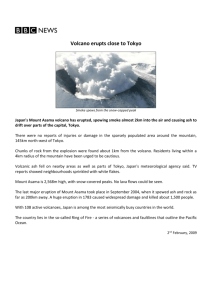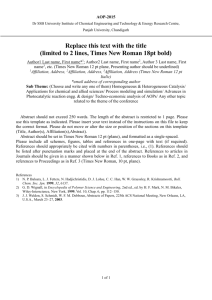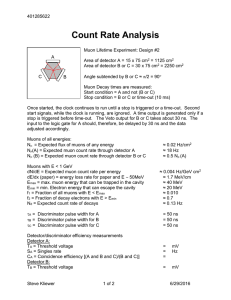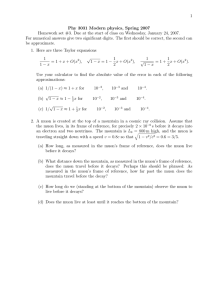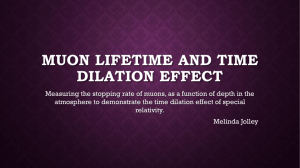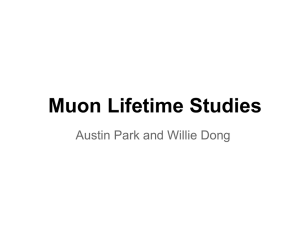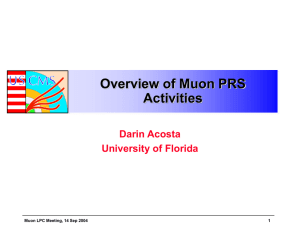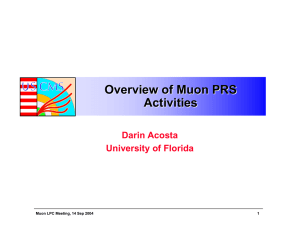Abstract Template
advertisement
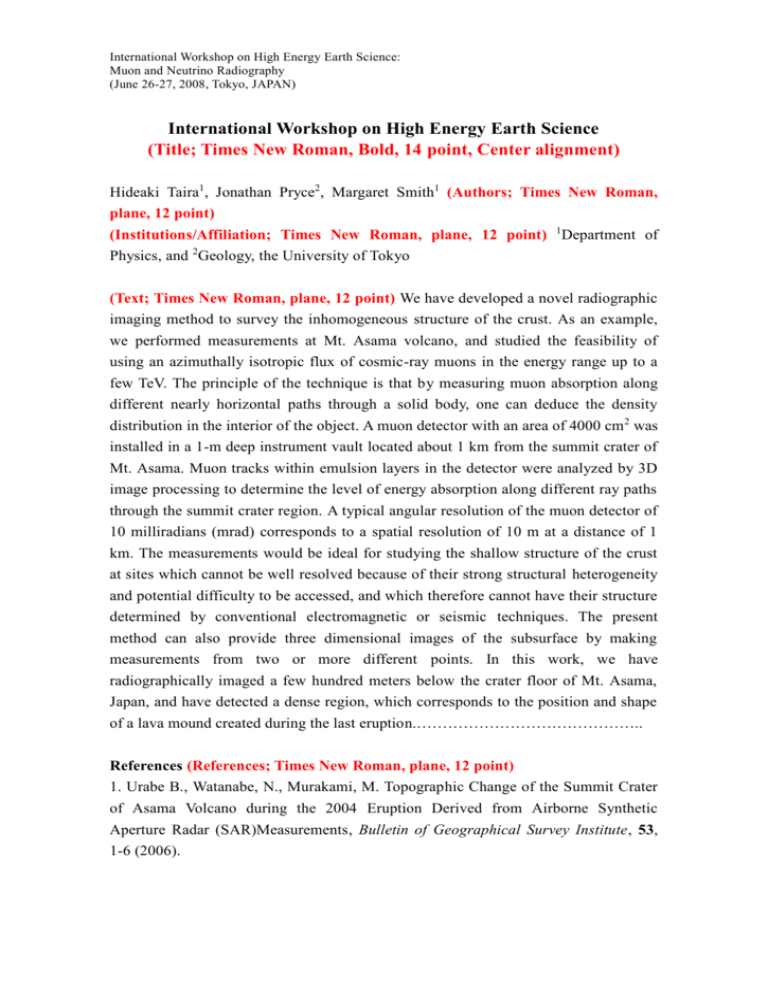
International Workshop on High Energy Earth Science: Muon and Neutrino Radiography (June 26-27, 2008, Tokyo, JAPAN) International Workshop on High Energy Earth Science (Title; Times New Roman, Bold, 14 point, Center alignment) Hideaki Taira1, Jonathan Pryce2, Margaret Smith1 (Authors; Times New Roman, plane, 12 point) (Institutions/Affiliation; Times New Roman, plane, 12 point) 1Department of Physics, and 2Geology, the University of Tokyo (Text; Times New Roman, plane, 12 point) We have developed a novel radiographic imaging method to survey the inhomogeneous structure of the crust. As an example, we performed measurements at Mt. Asama volcano, and studied the feasibility of using an azimuthally isotropic flux of cosmic-ray muons in the energy range up to a few TeV. The principle of the technique is that by measuring muon absorption along different nearly horizontal paths through a solid body, one can deduce the density distribution in the interior of the object. A muon detector with an area of 4000 cm 2 was installed in a 1-m deep instrument vault located about 1 km from the summit crater of Mt. Asama. Muon tracks within emulsion layers in the detector were analyzed by 3D image processing to determine the level of energy absorption along different ray paths through the summit crater region. A typical angular resolution of the muon detector of 10 milliradians (mrad) corresponds to a spatial resolution of 10 m at a distance of 1 km. The measurements would be ideal for studying the shallow structure of the crust at sites which cannot be well resolved because of their strong structural heterogeneity and potential difficulty to be accessed, and which therefore cannot have their structure determined by conventional electromagnetic or seismic techniques. The present method can also provide three dimensional images of the subsurface by making measurements from two or more different points. In this work, we have radiographically imaged a few hundred meters below the crater floor of Mt. Asama, Japan, and have detected a dense region, which corresponds to the position and shape of a lava mound created during the last eruption.…………………………………….. References (References; Times New Roman, plane, 12 point) 1. Urabe B., Watanabe, N., Murakami, M. Topographic Change of the Summit Crater of Asama Volcano during the 2004 Eruption Derived from Airborne Synthetic Aperture Radar (SAR)Measurements, Bulletin of Geographical Survey Institute, 53, 1-6 (2006).
